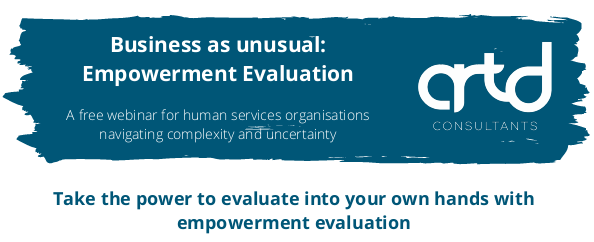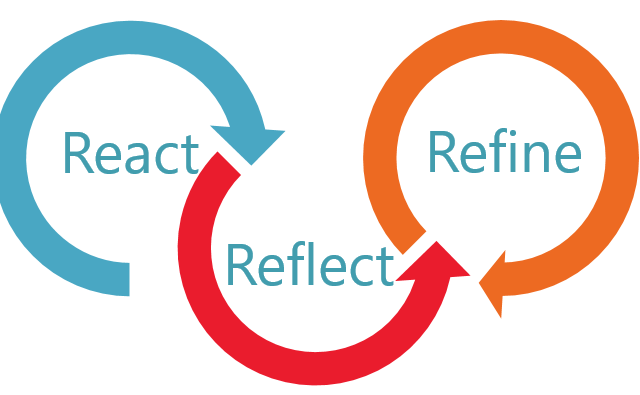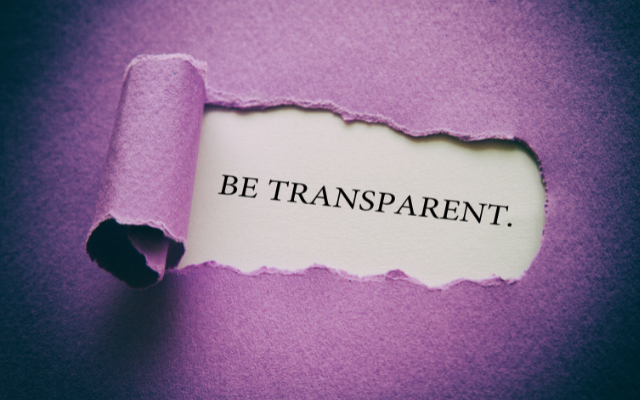
Sensemaking Under Pressure
Sensemaking Under Pressure
We have all been challenged to rethink the way we work; at the organisational, team, program and evaluation level. More than ever, we are observing the interconnectedness of our decision-making: choices we make in one aspect of a program or an evaluation, have widespread consequences. As systems expert, Donella Meadows, notes: “Systems surprise us, because our minds like to think about single causes neatly producing single effects.”
In seeking clarity amidst complexity, we’ve started using Chris Corrigan’s Sense-making in real time. Chris’s three-step tool prompts us to:
- Observe the situation: Noting what is happening, what we hear and feel and recording it. No judgment, no analysis. Just observing.
- Look for patterns: Exploring the commonalities, the exceptions, the contradictions and surprises. What are the relationships and interactions?
- Identify actionable insights: Understanding what is keeping the identified patterns in place. What holds things together? What separates them? How do identities and power dynamics exert influence?
As we used the tool, we found it hard to turn off our evaluator’s mindset. For example, we found ourselves asking about the relationships between our observations and trying to assess their merit or worth—and so we decided to make some adaptions to Chris’s tool. They might not seem like the most likely combination, but there’s not time like the present for experimenting.
Our adapted version prompts evaluative thinking in step 2. This supports us to notice what seems to be of value and the relationships between things, while questioning our interpretation and considering alternative explanations. And, before identifying actionable insights, we identified that it could be useful to consider the future we want to see to help unearth the seeds of that future that are evident in the present and home in on actions to enable these.
Last week, we took the adapted model to the second of our Business as Unusual webinars. Joined by evaluation practitioners from Australia, New Zealand and Canada, it was a great opportunity to use the tool to explore thinking about our organisations, teams, programs and evaluations in small groups. Here’s what we learned. You can access the slides and video from the webinar.
Organisations and teams: A rapid and dramatic shift
As we used the model to lay down our observations, we noticed a striking pattern. We were impressed by how rapidly and seamlessly our organisations and teams—small and large—had made changes previously imagined ‘too big’ or ‘too hard’ to tackle. There have been hurdles, but mostly these have been overcome with a ‘let’s do it’ attitude. We observed how communication has become more streamlined, and how red tape or bureaucracy has been narrowed.
There was an overall theme of intimacy and insight: working from home and increased (online) points of communication has deepened our understanding of each other’s lives and our connections. It’s brought greater flexibility. We’ve noticed an increased focus on and conversations about mental health.
There is a lot of good that could be carried forward, but also a sense that virtual connections will not be a complete replacement for face to face contact.
Programs and evaluations: A deeper understanding of what’s essential for service delivery
Our group, responsible for state and country-wide programs or evaluations of those programs, has observed widespread disruption to service delivery. There has been grief and uncertainty, both amongst the people who receive services, the people who deliver them and the people who evaluate them.
But the changes have paved the way for new service delivery approaches. We’ve observed just how agile and responsive we can be: previously lengthy processes have happened in weeks, new services have been wireframed and rolled out, staff have been mobilised in different ways. Approaches like telehealth, previously deemed too risky for vulnerable service users, have been trialled with safety closely monitored. And, we’ve observed mostly positive responses to this.
An important pattern is that in the time of crisis, services and evaluations are essentialised. The people who deliver and evaluate them are being challenged to consider what the key ingredients actually are, realising they are different than first imagined. Socially distant service delivery is saving us time, and it seems to be delivering outcomes at least equivalent to face-to-face delivery. We want to keep the essential ingredients and develop an evidence base for them. We want to check that everyone can access our programs and services when they’re delivered in this way and adjust if they can’t.
Our insight is that we are more grateful—for our health, our connections with our colleagues, friends and family, for the services we deliver. We’ve reconnected with wellbeing—happiness is found in small moments like online yoga on your deck in the morning, without a rush through traffic. There’s facilitating a workshop in your tracksuit and feeling that you’re more authentically you as you do it. We wondered whether this is our window to implement sustainable environmental policies, including less frequent travel. These are the actions we want to take back into our ‘new’ normal lives.
A process that expands your thinking and creates insight
The process drew out diverse experiences, enabled us to inquire into these and initiated conversations about adaptations of value that have emerged from crisis responses, what has enabled these and how they might be maintained into the future. Creating a clear delineation between the three steps helped us to tap into the different cognitive processes that each requires. The evaluative questions and futures thinking helped orient us to the insights for the future.
Your might also want to try other processes, such as Chris Corrigan’s suggested process for using the Cynefin framework, the kind of participatory scenario planning that Tighe outlines in Rethinking Strategy or a futures tool, such as Bill Sharpe’s Three Horizons Framework. Not so you can predict the future. That’s not possible. But to enable your organisation to understand the relationships and dynamics driving future change and the plausible impacts of this to unlock creative thinking.
Start wherever you are; in a complex, non-linear world, there can be no step-by-step rule book, only an infinite mandate to explore. Approach the future with fervent curiosity, not with an ideology or itinerary but with a methodology that progresses with questions: what do we need to do now? What do we need to be now? What must we preserve at all cost? Rich futures are mapped by those with the energy to convene, the passion to learn from the widest variety of human imagination, paying attention, changing course, discovering and inventing what the world demands of us all. [Margaret Heffernan, Unchartered]
We encourage you to adapt the process, try it with your team, and experiment.
Taking the power of evaluation into your own hands
If you are wondering how your organisation, your team or your program are faring and what is important as we take the first steps out of strict social distancing measures, evaluation has a lot to offer.
But it can seem overwhelming, overly resource-intensive and exclusive. Enter empowerment evaluation. It seeks to challenge power dynamics by opening up evaluation to all and encouraging discussion at all levels.
Join our international guest – author of Empowerment Evaluation, David Fetterman, to see how empowerment evaluation can make evaluation easy, inclusive and meaningful.
You can register for the webinar here. If you would like to download a flyer to share with others, Click here.




